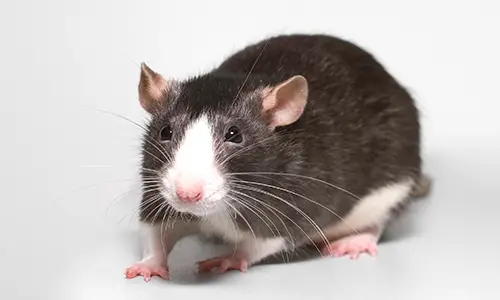1.Rat Species
There are over 56 rat species with the Old World rats being common in North America. Old word rats include the Norway rat, also called the brown rat, wharf rat or sever rat and the black rat, also known as the roof rat. Old world rats entered North America via ships and continue to get into new places around the world through board ships, freight trucks, trains and other goods.
2.Habitation
Out of the 56 known rat species, most have their habitations in remote places such as rain forests and marshlands. The Norway and black rats are some of the common species that live close to human habitations such as places where people have established residency or industries. Norway rats live in roughly dug burrows about 3 feet long 12-18 inches beneath the ground.
3.Physical Features
Norway rats are 16 inches long and have a long, scaly tapering tail that is shorter than the length of the body and head combined. These rats are brownish grey in color, top to bottom. Occasionally, black, white, or mottled Norway rats are found. Roof rats are the same size as Norway rats except that they are darker and slender. Their tails are longer than the length of their body and head combines. They are great climbers and are commonly found in upper building levels and roofs.
4.Feeding
Rats thrive well in habitations where they can access food and water. Old world rats feed on anything that livestock or humans eat in addition to other palatable items such as animal droppings, other rats and garbage. Rat species that live away from human settlements feed on insects, nuts, seeds, bird eggs and young birds. When they have a chance to choose, rats feed on a balanced diet and opt for wholesome fresh items as opposed to contaminated or stale foods. Rats are omnivorous pests that eat their young ones if starved.
5.Feeding Time
Generally, rats feed during the night. As soon as darkness falls, rats start foraging and mostly gather food before midnight. Rats tend to hoard or store food items in hidden areas. The main challenge for rats is the fact that they cannot survive for long without water after taking foods that do not provide adequate liquids for their bodies. Foods found in household garbage contain adequate moisture and provide fairly balanced diets
6.Rat Territory
Old World rats tend to move away from their nests, about 50 to 300 feet, in search of water and food as well as territory patrol. If need be, they are capable of travelling further. Rats typically live together in groups dominated by a single large male rat that guards aggressively keeps other males from mating with the harem of females under its guard. Rats are rarely seen during the day. Those seen in daytime are low ranked rats who dominant rats deny access to food during the night.
7.Nesting
Nesting among rats varies from one species to the other. Roof rats nest in trees, attics, overgrown vines or shrubs. They rarely burrow nests on the ground. Norway rats nest beneath the ground or in lower floors. Rats can use several sites for nesting and opt to nest in areas where water is available.
8.Reproduction
Old World rats reproduce during warm months and give birth to 6-10 litter after three weeks. Litters are weaned after 20 days and breed when 3-4 months old.
9.Rat Mortality
Old World rats have a life span of less than a year. Females tend to live longer than males. Rats die of poisoning, traps, vehicle hits or are killed by domestic dogs or cats or owls, foxes, hawks, snakes, and coyotes in the wilderness.
10.Disease Transmission
Rats transmit diseases such as Weil’s disease, viral hemorrhagic fever, Q fever and plaque that are fatal to human beings.











Leave a Reply